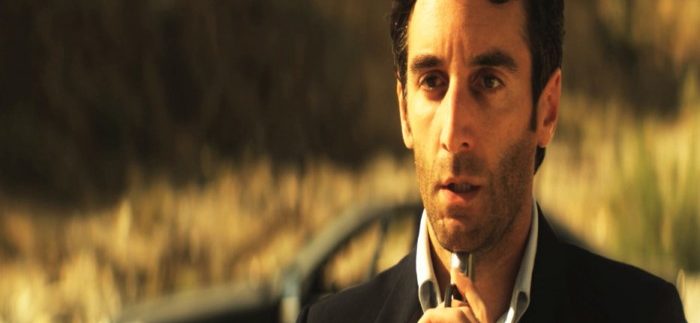‘Never, Never Talk to Strangers’ & ‘Dancing in Fumes’: A Review

Cairo 360
Though many will point to the Arab Spring as a catapult of creative output in the Middle East, the region’s relationship with film has always been a unique one. Proof of such is award-winning Syrian filmmaker, Noor Hilal, who in 2010 gave birth to two short films; Never, Never Talk to Strangers and Dancing in Fumes.
Though miles apart in content, the films share elements that point to Hilal as an accomplished and contemplative writer-director.
Never, Never Talk to Strangers opens with a wide shot of a car in a desert; inside, close-ups show a man hesitantly, but calculatingly, loading a gun and it quickly becomes clear that this man is planning to kill himself.
However, he’s continually interrupted by phone calls from young girl called Emma, who he doesn’t know. After some resistance, the man eventually becomes engaged enough with her that he stays on the line. As the man becomes drawn to the innocence of the girl, he finds some kind of epiphany and drives away and we come to learn a secret about Emma.
Very little is seen of the girl; she’s surrounded in cold blue, the camera never catching more than her eyes and mouth, which keeps the viewer hooked; who is she, where is she and why is she calling a stranger?
At the other end of the spectrum, the man stands in an open, empty desert, seeming insignificant, weak and out in the open with nothing to lose. The film plays on contrasts throughout; the man’s brain is wracked with complexities, weighed down by the intricacy of adulthood. Emma, on the other hand, is innocent, naive and tries to solve the man’s problems with simple, unrealistic, but ultimately rational, solutions.
The film is shot beautifully; there’s a sense of voyeurism that lingers over both characters, both making for an unnerving viewing.
Dancing in Fumes is much simpler in narrative and setup, using flashbacks as a key device. Beginning with the aftermath of an incident involving a suicide bomber, deliriously concerned Palestinians and Israeli parents swarm police at an Israeli police station, demanding news of their children. As tempers calm, we are introduced to a Palestinian man waiting for word on his eighteen-year-old son with his wife and young daughter. He strikes up an informal and almost unspoken union with a younger Israeli man, he too waiting to hear on the fate of his young daughter. The two men come to find an immediate empathy between one another.
While the subject matter of Dancing in Fumes is a challenging and affecting one, the film plays a little too much into clichés; the hysterical Arab woman, the soft-spoken, modest Arab father and the initially colder, more liberal Israeli man. By the end of the film, which leads to a climatic twist, the flashbacks become redundant; while it aims to give back-story to the characters, it simplifies their motivations and change in character. In layman’s terms, without the flashbacks, the story is just as, if not more, resonant.
The film doesn’t address the politics of the Palestinian-Israeli conflict, instead looking at the endlessly more complex human aspect of it. However, it again simplifies the intricacies of human nature for the sake of a suitable ending. Visually, Dancing in Fumes is a little bit rawer than Never, Never Talk to Strangers; the main setting of the police station waiting area is cold and baron, but it also renders it characterless, which works against any short film.
One thing that both films do have in common, however, is suspense; both surprising endings are initially shocking, but as the credits roll, they’ll leave you pondering towards the realisation that both revelations are, unfortunately, realities of modern life.
recommended
 Arts & Culture
Arts & Culture
Local Festival Going Global: Sharm El Sheikh International Theatre Festival for Youth in Poland Takes Off This Weekend
Egyptian Artists festivals +5 Arts & Culture
Arts & Culture



